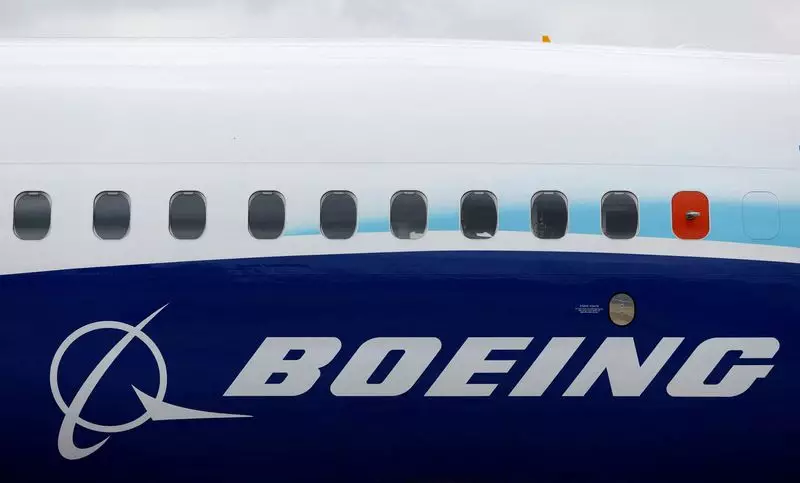Boeing, once a symbol of strength and innovation in the aerospace industry, now finds itself grappling with an array of crises that have significantly impacted its financial health and reputation. As the company prepares to announce its fourth-quarter results, projections indicate a staggering loss of approximately $4 billion, underscoring the severity of its current situation. The challenges plaguing Boeing range from production quality issues to heightened regulatory scrutiny, supply chain delays, and the reverberating effects of labor strikes. This article delves into the multifaceted issues at hand, the strategic decisions being made, and the broader implications for the aviation industry.
Boeing’s anticipated loss starkly contrasts with the more optimistic forecasts from Wall Street, indicating a growing disconnect between investor expectations and the company’s operational realities. The forecasted quarterly loss of $5.46 per share is particularly alarming, as analysts had expected a much lower loss of $1.84 per share. Such a profound divergence sends a clear signal: Boeing is not merely facing short-term setbacks but is caught in a web of deeper, systemic issues.
The company has attributed its financial distress to several factors. First among these is the ongoing fallout from the infamous Boeing 737 MAX incidents, which revealed critical flaws in production quality and safety. The aftermath of these crashes resulted in more than just financial losses; they shattered public trust and intensified scrutiny from regulatory bodies. Aviation regulators have since adopted stricter oversight standards, and the repercussions are far-reaching.
Additionally, the COVID-19 pandemic has further exacerbated these challenges. The global health crisis not only reduced demand for air travel but also disrupted critical supply chains. This disruption continues to linger, highlighting the fragility of Boeing’s operational frameworks. The recent incident of a mid-air panel blowout on a nearly new 737 MAX has only magnified these issues, raising serious questions about the company’s quality assurance processes.
Another pivotal factor contributing to Boeing’s turmoil is the labor strike involving over 33,000 workers on the West Coast. This strike has inflicted severe damage by halting the production of key aircraft models, further straining Boeing’s ability to meet market demand. With annual losses projected to approach those seen in 2020—when the company recorded nearly $12 billion in losses—it’s clear that the impact of labor disputes cannot be understated.
CEO Kelly Ortberg, who took on the role in August, has publicly acknowledged these “near-term challenges.” However, while he asserts that the company has taken crucial steps toward stabilization, including resolving the labor strike and raising significant capital, the path ahead remains fraught with uncertainty.
In light of its ongoing struggles, Boeing’s forecasts for its commercial and defense segments reflect a more cautious outlook. The commercial division anticipates revenues in the fourth quarter to reach only $4.8 billion, alongside an alarming operating margin loss of 43.9%. This situation is compounded by significant pre-tax earnings charges tied to the 777X and 767 programs, primarily stemming from increased labor costs.
Despite facing considerable setbacks, Boeing has identified opportunities amid the chaos. A notable win has been securing a substantial order from Pegasus Airlines, traditionally an Airbus customer, for 100 737 MAX planes. However, such victories are overshadowed by persistent declines in new orders, which have dropped by more than half compared to the previous year.
In the defense sector, Boeing also anticipates a staggering $1.7 billion in pre-tax earnings charges across multiple programs, including the KC-46 tanker and the T-7 trainer. These losses emphasize the extent to which labor strife and project delays are hindering Boeing’s overarching business strategy.
Boeing’s struggles serve as a cautionary tale not only for the company but for the entire aerospace sector. The interplay of regulatory scrutiny, economic pressures, labor relations, and production quality has created a precarious environment where recovery seems challenging. If Boeing cannot stabilize its operations and restore its reputation, the ripple effects will reverberate throughout the industry.
While Boeing’s leadership is actively pursuing strategic adjustments and financial solutions, the road to recovery appears daunting. Stakeholders will be watching closely in the coming months, hoping not just for a turnaround for Boeing, but for signs of resilience within the larger aviation industry as it seeks to regain its footing in a post-pandemic landscape.

